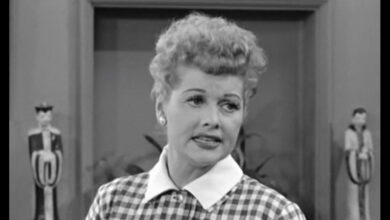The Story of Tamika Pratt: A Deep Dive into a Culturally Relevant Character

Introduction to Tamika Pratt: The Cultural Context
Tamika Pratt is a name that resonates with many people, not just as a fictional character but as a symbol of the modern conversation surrounding racial injustice and police violence. She first came into the spotlight in the TV series “All American,” where her story arc delves into themes that are tragically reflective of real-life issues faced by Black communities in the United States. In this article, we will explore the significance of Tamika Pratt’s character, why her storyline matters, and how her portrayal serves as a mirror to societal issues.
Who is Tamika Pratt?
Tamika Pratt is introduced in Season 3 of “All American,” a sports drama that tackles a range of social justice issues alongside its primary plotline about high school football. Tamika’s storyline is one of the pivotal moments of the season, although she is not physically present in many scenes. Instead, her presence is felt through the emotional and societal impact of her tragic death at the hands of police.
Her character’s story is based on an all-too-familiar narrative: a young Black woman is unjustly killed by the police during a routine traffic stop. As her story unfolds, it forces the audience and the characters in the show to grapple with uncomfortable truths about racism, privilege, and the justice system.
Tamika Pratt’s Death: A Mirror to Reality
Tamika Pratt’s death in the series is not just a dramatic plot point; it holds a mirror to real-life events. The narrative is painfully similar to cases like those of Sandra Bland, Breonna Taylor, and other Black women whose deaths have spurred nationwide protests in recent years.
In the show, Tamika is pulled over for sleeping in her car, a situation that escalates quickly and tragically. Instead of receiving help or compassion, the police officers involved use excessive force, resulting in her death. This mirrors many real-world situations where Black individuals, especially women, are disproportionately subjected to police violence.
By creating Tamika’s story, “All American” highlights how these systemic issues of race, gender, and policing continue to plague American society. The show’s creators have openly acknowledged the influence of real-world cases on Tamika’s storyline, aiming to spark dialogue and awareness about police brutality and systemic racism.
The Role of Tamika Pratt in “All American”
In the storyline, Tamika Pratt’s death becomes a focal point for many characters, especially Olivia Baker, one of the main protagonists of the series. Olivia, who is biracial and comes from a wealthy family, becomes deeply affected by Tamika’s death. She realizes that her own privilege, due to her skin color and socioeconomic status, has often shielded her from the same dangers faced by less fortunate Black women like Tamika.
Olivia takes it upon herself to use her platform to raise awareness about Tamika’s death, engaging in activism and confronting her own privilege. Her decision to publicize bodycam footage of Tamika’s arrest brings her into conflict with the law and forces her to make difficult decisions about her moral responsibilities.
The inclusion of Tamika Pratt’s story within Olivia’s personal journey serves as a critical reflection on how privilege—whether based on race, gender, or class—can influence one’s perspective on justice and inequality. The character of Tamika Pratt serves as an emotional catalyst for other characters, pushing them to confront uncomfortable truths about their roles in a system that perpetuates racial injustice.
Tamika Pratt and the Black Lives Matter Movement
Tamika Pratt’s storyline is closely linked to the themes and goals of the Black Lives Matter (BLM) movement. The movement, founded in 2013 after the acquittal of Trayvon Martin’s killer, has since become one of the most visible and impactful social justice movements globally. It aims to address systemic racism, particularly in the form of police violence, that disproportionately affects Black individuals.
The inclusion of Tamika Pratt’s story in “All American” adds to the ongoing cultural conversation about race and policing in America. Her death mirrors the stories of real people who have lost their lives due to unjust policing practices, and it serves as a reminder of why movements like BLM continue to be essential. By weaving her story into the show’s narrative, “All American” amplifies the urgent need for reform in law enforcement and the justice system.
The Media’s Role in Tamika Pratt’s Storyline
A critical aspect of Tamika Pratt’s story in “All American” is the role that media plays in shaping public opinion around police violence and racial injustice. In the show, Olivia Baker uses her platform as the daughter of a prominent public figure to bring attention to Tamika’s case, but she also faces resistance. This mirrors real-world situations where the media plays a significant role in either amplifying or downplaying incidents of police brutality.
In many real-life cases, media coverage—or the lack thereof—can influence the public’s perception of a victim. Tamika Pratt’s case in the show, like many real-world incidents, initially receives little attention, until Olivia’s activism brings it into the spotlight. This narrative highlights how media and public awareness are critical in seeking justice for victims of police violence.
Tamika Pratt as a Symbol of Systemic Racism
Tamika Pratt’s character transcends the realm of fiction, becoming a symbol of the larger issue of systemic racism in the United States. Her death is not an isolated incident but part of a broader pattern of violence against Black individuals at the hands of law enforcement.
“All American” uses Tamika’s story to examine the broader structures of power and privilege that allow such injustices to continue. By focusing on the aftermath of her death and its impact on the community, the show brings to light the ways in which racism is embedded in various aspects of society, from policing to media representation.
The Public’s Reaction to Tamika Pratt’s Storyline
The introduction of Tamika Pratt in “All American” was met with strong reactions from viewers, particularly because of its relevance to real-world events. Many praised the show for its willingness to tackle such heavy subjects and for portraying the emotional toll that these incidents have on Black communities.
At the same time, some viewers found the storyline difficult to watch, given its reflection of real-life traumas. For many Black viewers, Tamika’s story hit too close to home, reminding them of the daily struggles faced by Black people in America.
The show’s creators have emphasized that their goal was not to sensationalize Tamika’s death but to create a space for important conversations about race and justice. The character’s story acts as a catalyst for viewers to reflect on their own roles in these systems, whether as bystanders, activists, or those directly affected by such tragedies.

Conclusion: The Legacy of Tamika Pratt
The story of Tamika Pratt in “All American” is more than just a plot device—it’s a reflection of ongoing societal issues surrounding race, policing, and justice. By including her character, the show forces its audience to confront the uncomfortable reality of systemic racism and the ways in which it continues to shape the lives of Black individuals in America.
Tamika’s death may be fictional, but it serves as a powerful reminder of the real-world struggles faced by marginalized communities. Her story encourages viewers to think critically about issues of privilege, activism, and justice. As more shows like “All American” continue to address these pressing issues, characters like Tamika Pratt will remain crucial in pushing the conversation forward.
Ultimately, Tamika Pratt’s legacy is not just about her death but about the dialogue and change her story inspires in both the fictional world of “All American” and in our society at large.





